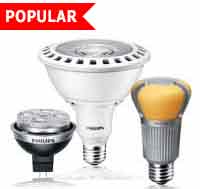How Much Is That Incandescent Costing You?
Many small businesses have already switched to energy-efficient lighting but there are still plenty of holdouts. Some business owners don’t like the look of twisty compact fluorescent bulbs (CFLs), or they find LEDs and CFLs light too glaringly bright. Higher upfront costs of new lighting technologies scare away others. However, it’s worth taking a new look at energy-efficient lighting, if you haven’t already.
Here’s a look at the potential cost savings of making the switch:
Say you have one 60-watt incandescent light bulb that stays on for 60 hours per week and thus uses 3,600 watts per week. That’s 187,200 watts per year, or 1,872 kilowatts. If you pay 10-cents per kilowatt hour for electricity, that bulb costs you roughly $19 per year. Multiply that across 10 incandescent bulbs, and you’re looking at an annual lighting electricity cost of about $190.
Replacing those 10 bulbs with 14-watt CFLs might cost $20. But you would pay only about $44 in electricity each year – a $136 annual electricity savings. (The standard price of LEDs is still quite a bit higher – perhaps $20 per bulb – but that is expected to drop substantially in coming years.)
The technology of efficient lighting is also evolving quickly. Some businesses have refrained from moving to efficient lighting because they use dimmer switches, which haven’t generally worked with CFLs. But with the advent of LEDs and better dimmable CFLs, it’s more of an option these days. Read more about choosing light bulbs and the options in Consumer Report’s Light Bulb Buying Guide.
It’s also worth checking with your utility company about incentives. Many utilities now provide incentives to commercial customers that install efficient lights, sometimes covering up to 70% project costs. That may generate payback times of under six months. You can find out if your utility offers incentives at the Database of State Incentives for renewables and Efficiency.
Have you installed energy-efficient lights at your business? How much of a cost savings have you seen?
Source: Small business trends












Comments